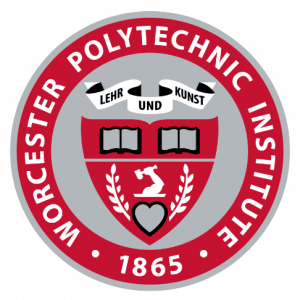This project takes a human-centered computing approach to build a foundation that advances understanding of how deaf individuals could work and learn in environments that are designed with their needs and preferences at the forefront.
Positions
We are recruiting MS and undergraduate students (including MQP, IQP) to work on this project.
We encourage applicants for graduate studies from the Deaf community for this project. This project is in close collaboration with Jeanne Reis and the ASL Education Center in Framingham, MA. Researchers will be joining a strong Deaf community there.
Related Publications
Shruti Mahajan, Rachel Boll, Khulood Alkhudaidi, Jeanne Reis, and Erin T. Solovey. 2025. Conducting HCI Research with the Deaf Community in American Sign Language: Practices and Experiences. In Extended Abstracts of the CHI Conference on Human Factors in Computing Systems (CHI EA ’25), April 26–May 01, 2025, Yokohama, Japan. ACM, New York, NY, USA, 8 pages. https://doi.org/10.1145/3706599.3706691 (To Appear)
Rachel Boll, Shruti Mahajan, Tish Burke, Khulood Alkhudaidi, Brittany Henriques, Isabelle Cordova, Zoey Walker, Erin T. Solovey, Jeanne Reis. User Perceptions and Preferences for Online Surveys in American Sign Language: An Exploratory Study. In Proc. of ACM SIGACCESS Conference on Computers and Accessibility. (ASSETS’23). [Video]
Shruti Mahajan, Khulood Alkhudaidi, Rachel Boll, Jeanne Reis, and Erin Solovey. 2022. Role of Technology in Increasing Representation of Deaf Individuals in Future STEM Workplaces. In 2022 Symposium on Human-Computer Interaction for Work (CHIWORK 2022). Association for Computing Machinery, New York, NY, USA, Article 16, 1–6.
Mahajan, S., Walker, Z., Boll, R., Santacreu, M., Salvino, A., Westfort, M., Reis, J., Solovey, E.T. (2022). Towards Sign Language-Centric Design of ASL Survey Tools. In CHI Conference on Human Factors in Computing Systems (CHI ’22), April 29-May 5, 2022, New Orleans, LA, USA. ACM, New York, NY, USA, 16 pages. Best Paper Award Honorable Mention[Video Presentation]
Boll, R., Mahajan, S., Reis, J., Solovey, E.T. (2020). Creating questionnaires that align with ASL linguistic principles and cultural practices within the Deaf community In Proc. of the 22nd International ACM SIGACCESS Conference on Computers and Accessibility.
Jeanne Reis, Erin T. Solovey, Jon Henner, Kathleen Johnson, Robert Hoffmeister. ASL CLeaR: STEM Education Tools for Deaf Students. Proc. ASSETS’15. (Poster paper) ACM. 2015.
NSF Award Abstract
In the United States, American Sign Language (ASL) is the primary language of many deaf adults, and many deaf students receive classroom instruction in ASL while learning English as a second language. However, most interactive computing tools are presented and navigated exclusively in English, even those designed for deaf audiences. Making access to technology contingent upon a sufficient command of a second language creates significant barriers and access delays for deaf individuals.
This project takes a human-centered computing approach to build a foundation that advances understanding of how deaf individuals could work and learn in environments that are designed with their needs and preferences at the forefront. It investigates the feasibility and effectiveness of new SL1 technology, which will provide delivery of signed language (SL) content by allowing deaf signers to navigate, search, and interact with technology completely in their first language (L1). The optimization of SL1-based user interfaces has never before been attempted and could lead to a breakthrough in historic communication and learning barriers; determining preferences, needs and optimized presentation of information for Deaf users will benefit this population and future populations of ASL signers.
Technology that is truly accessible to deaf SL-signers has the power to facilitate lifelong learning, enhance access to educational content such as STEM topics, improve career opportunities, and allow SL-based organization of SL corpora, assessments, dictionaries, learning and employment resources. This work will directly impact deaf individuals, parents, interpreters, teachers, and students studying SL. Direct collaboration with deaf graduate and undergraduate students, deaf faculty, and deaf researchers, along with several partner schools for the deaf will ensure that the Deaf community has an instrumental leadership role in the design of future tools that meet their needs.

